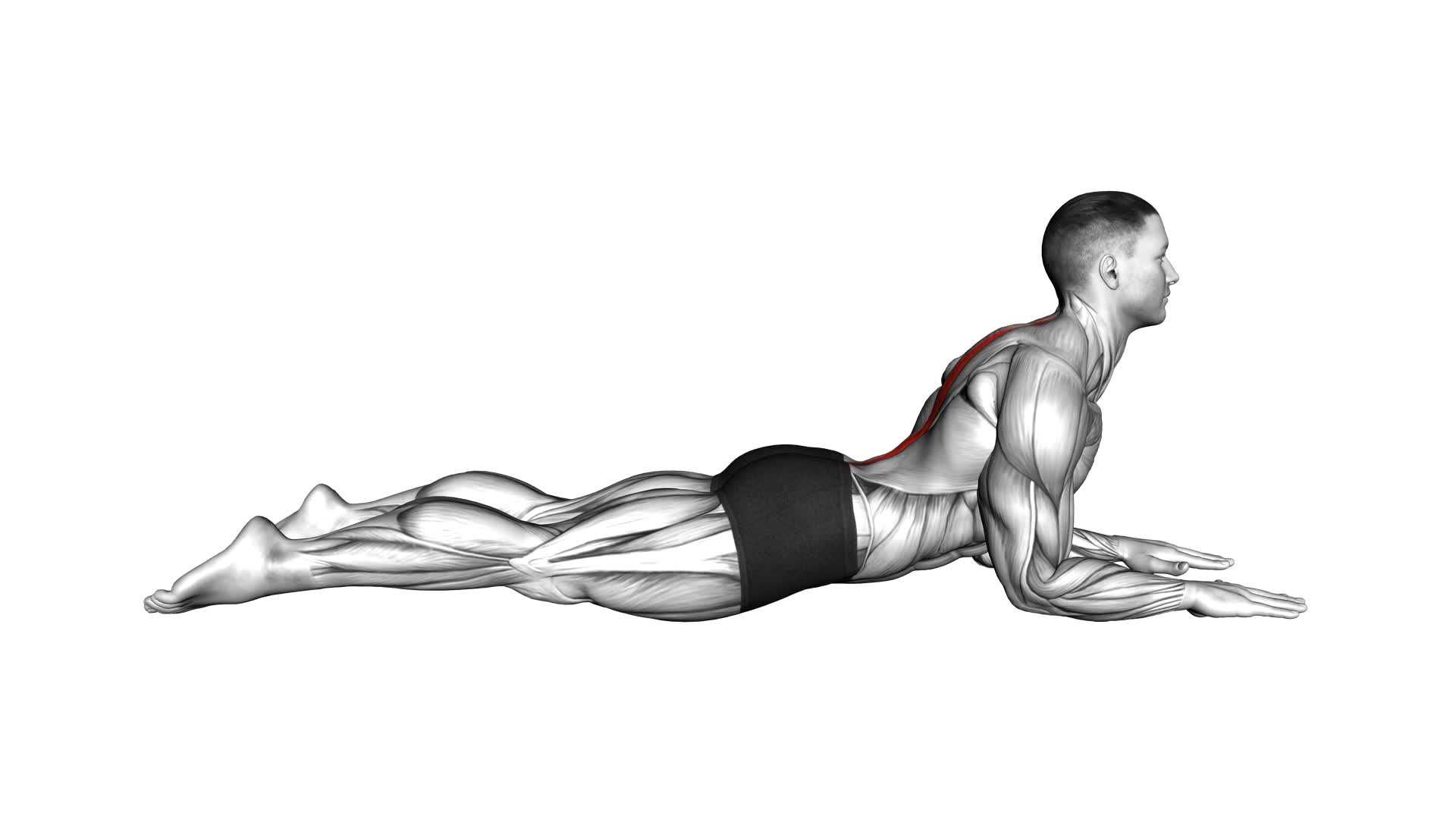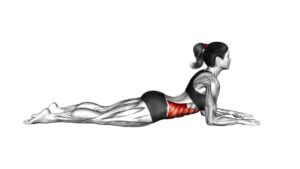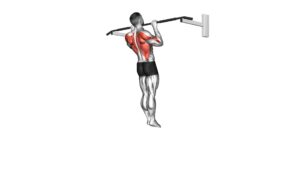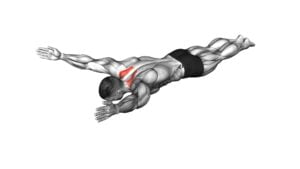Sphinx – Video Exercise Guide & Tips

Looking to improve your exercise routine? Check out 'Sphinx – Video Exercise Guide & Tips' for a comprehensive guide on how to properly execute the Sphinx pose.
Watch This Exercise Video
This article will provide you with the benefits of the pose, tips for correct alignment and technique, modifications and variations to suit your needs, common mistakes to avoid, and helpful tips to ensure a successful Sphinx practice.
Get ready to enhance your workout with this informative video guide!
Key Takeaways
- Sphinx Pose stretches and strengthens the spine
- It opens up the chest and lungs, improving posture and increasing breath capacity
- Sphinx Pose relieves tension and promotes good posture
- It strengthens the back muscles and improves overall body awareness
Benefits of Sphinx Pose
Experience the rejuvenating benefits of practicing Sphinx Pose.
Sphinx Pose, also known as Salamba Bhujangasana, offers a variety of benefits for both the mind and body. One of the key benefits of Sphinx Pose is its ability to stretch and strengthen the spine. As you gently lift your chest off the ground and elongate your spine, you can relieve tension and improve posture.
Additionally, Sphinx Pose helps to open up the chest and lungs, enhancing breath control. By focusing on your breath while in this pose, you can deepen your breath capacity and increase oxygen flow throughout your body.
The importance of breath control can't be overstated. It not only helps to calm the mind and reduce stress, but it also improves overall lung function and circulation. When practicing Sphinx Pose, take slow, deep breaths, allowing your breath to guide your movement and deepen your stretch. By mastering breath control in this pose, you can carry this skill into other areas of your life, promoting relaxation and mental clarity.
Proper alignment and technique are essential when practicing Sphinx Pose. As you come into the pose, make sure your elbows are directly under your shoulders and your forearms are parallel to each other. Press your palms firmly into the ground and engage your core muscles to support your lower back. Keep your gaze forward and relax your shoulders away from your ears. By maintaining proper alignment and technique, you can maximize the benefits of Sphinx Pose and avoid unnecessary strain or injury.
Proper Alignment and Technique
To maintain proper alignment and technique in Sphinx Pose, you should focus on positioning your elbows directly under your shoulders and keeping your forearms parallel to each other. This alignment is crucial as it helps to engage the muscles in your upper body and maintain stability throughout the pose.
Here are three key points to help you practice Sphinx Pose with proper alignment and technique:
- Lengthen your spine: As you settle into the pose, imagine lengthening your spine from the crown of your head to your tailbone. This helps to create a sense of elongation and prevents rounding of the back.
- Relax your shoulders: While in Sphinx Pose, consciously relax your shoulders away from your ears. This action helps to release tension in the upper body and allows for a more comfortable and sustainable practice.
- Engage your core: To support the alignment of your spine and maintain stability, engage your core muscles by drawing your navel towards your spine. This activation helps to protect your lower back and maintain proper posture.
By practicing Sphinx Pose with proper alignment and technique, you can experience the full benefits of this pose, including improved posture, increased spinal flexibility, and a sense of grounding and relaxation.
Remember to listen to your body and modify the pose as needed to suit your individual needs and limitations.
Modifications and Variations
If you want to modify or vary your Sphinx Pose, there are several options available. For beginners, it's important to listen to your body and make modifications that suit your level of flexibility and strength.
One modification you can try is to place a bolster or folded blanket under your forearms for added support. This can help reduce strain on your wrists and make the pose more accessible.
Another modification for beginners is to keep your hips on the ground and bend your elbows slightly. This can help alleviate any discomfort in your lower back and make the pose more comfortable.
For advanced variations, you can experiment with different arm positions. Instead of resting your forearms on the ground, try extending your arms straight out in front of you. This can intensify the stretch in your chest and shoulders.
You can also try lifting one leg off the ground while maintaining the pose. This challenges your balance and engages your core muscles even more.
Common Mistakes to Avoid
One common mistake to avoid when practicing Sphinx Pose is collapsing your shoulders forward, which can decrease the effectiveness of the stretch and strain your neck. To ensure you're performing the pose correctly and avoiding these common mistakes, keep the following points in mind:
- Maintain proper alignment: It's important to keep your shoulders stacked directly over your elbows and wrists. Avoid sinking your chest towards the ground or allowing your shoulders to round forward. This will help you maintain the integrity of the pose and prevent strain on your neck.
- Engage your core: Many people mistakenly relax their core muscles in Sphinx Pose, leading to a sagging lower back and incorrect alignment. Instead, actively engage your core by drawing your belly button towards your spine. This will help stabilize your spine and create a strong foundation for the pose.
- Avoid excessive strain: Remember that Sphinx Pose is a gentle backbend, so it's important to avoid any excessive strain on your lower back. If you feel any discomfort or pain, modify the pose by lowering your chest slightly or using props like a bolster or folded blanket for support.
Tips for a Successful Sphinx Practice
For a successful Sphinx practice, make sure to focus on maintaining proper alignment and engaging your core throughout the pose. This will help you maximize the benefits of the exercise and avoid common challenges that may arise.
One common challenge is the tendency to collapse or sink into the pose, which can strain the lower back. To prevent this, actively lift your chest and lengthen your spine, while keeping your shoulder blades down and back.
Another challenge is the difficulty in breathing fully while in the Sphinx pose. To overcome this, practice deep belly breathing by inhaling deeply through your nose, filling your belly with air, and exhaling fully through your mouth. This will help you relax and release tension in your body.
Remember to maintain a steady and even breath throughout the practice to enhance your focus and stability. By paying attention to alignment and incorporating proper breathing techniques, you can have a successful Sphinx practice that strengthens your back, opens your chest, and promotes overall body awareness.
Frequently Asked Questions
How Long Should I Hold Sphinx Pose For?
To get the most out of the Sphinx pose, it's important to know how long to hold it for. Proper alignment is key to avoid strain and injury.
The duration of holding the Sphinx pose varies depending on your level of comfort and experience. It's recommended to start with holding the pose for 30 seconds to a minute, gradually increasing the time as you become more comfortable.
Remember to listen to your body and adjust accordingly.
Can I Practice Sphinx Pose if I Have Lower Back Pain?
Yes, you can still practice Sphinx pose if you have lower back pain. However, it's important to listen to your body and make modifications as needed. If the pose causes discomfort or exacerbates your pain, you can try practicing alternative poses that are gentler on the lower back, such as Child's Pose or Cat-Cow.
Additionally, using props like a bolster or blanket can provide extra support and help alleviate any strain on your lower back.
What Are the Benefits of Practicing Sphinx Pose Regularly?
Practicing Sphinx Pose regularly offers numerous benefits for your body. It helps to strengthen your lower back muscles, improve spinal flexibility, and relieve tension in the shoulders and chest.
By maintaining proper alignment in Sphinx Pose, you can also open up the front of your body, stretch your hip flexors, and stimulate your abdominal organs.
Incorporating this pose into your routine can contribute to overall posture improvement and a healthier, more balanced body.
Are There Any Contraindications or Precautions for Practicing Sphinx Pose?
When practicing Sphinx pose, it's important to be aware of any contraindications or precautions. Understanding these factors will help you practice safely and avoid any potential risks.
How Can I Deepen My Stretch in Sphinx Pose?
To deepen your stretch in Sphinx pose, there are various stretching techniques you can try.
Focus on lengthening your spine by lifting your chest and relaxing your shoulders.
Engage your core and press your hips down towards the mat.
Gradually walk your elbows forward to increase the stretch in your lower back.
Remember to breathe deeply and listen to your body.
These techniques will enhance your flexibility and help you get the most out of Sphinx pose.
Conclusion
In conclusion, incorporating Sphinx Pose into your exercise routine offers numerous benefits, including improved posture, strengthened back muscles, and increased flexibility.
By following proper alignment and technique, avoiding common mistakes, and exploring modifications and variations, you can enhance the effectiveness of this pose.
Remember to listen to your body and make adjustments as needed.
With consistent practice and these helpful tips, you can enjoy a successful Sphinx practice and reap the rewards for your overall well-being.

Author
Years ago, the spark of my life’s passion ignited in my mind the moment I stepped into the local gym for the first time. The inaugural bead of perspiration, the initial endeavor, the very first surge of endorphins, and a sense of pride that washed over me post-workout marked the beginning of my deep-seated interest in strength sports, fitness, and sports nutrition. This very curiosity blossomed rapidly into a profound fascination, propelling me to earn a Master’s degree in Physical Education from the Academy of Physical Education in Krakow, followed by a Sports Manager diploma from the Jagiellonian University. My journey of growth led me to gain more specialized qualifications, such as being a certified personal trainer with a focus on sports dietetics, a lifeguard, and an instructor for wellness and corrective gymnastics. Theoretical knowledge paired seamlessly with practical experience, reinforcing my belief that the transformation of individuals under my guidance was also a reflection of my personal growth. This belief holds true even today. Each day, I strive to push the boundaries and explore new realms. These realms gently elevate me to greater heights. The unique combination of passion for my field and the continuous quest for growth fuels my drive to break new ground.







